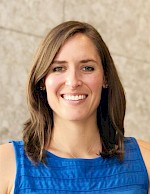Easing the Transition for Retiring Collegiate Student-Athletes

Published
What assistance is provided for college athletes when it comes to entering the real world? Logistically, athletic departments may provide resume building workshops, networking sessions, and other career-related support (Burns, Jasinski, Dunn, & Fletcher, 2013). The missing link appears to be education about and support for the identity shift that accompanies leaving athletics behind (Martin, Fogarty, & Albion, 2014). When the end of sport is expected and planned for, the identity shift is softened (Stambulova, Alfermann, Statler, & Côté, 2009). However, even with planning, turning away from an athletic identity toward a career can ignite strong emotions, disrupt social support, as well as challenge self-esteem and self-worth (Stoltenburg, Kamphoff, & Lindstrom Bremer, 2011). With a multidimensional transition, student-athletes could benefit from focusing on areas of their life that may have been tabled while competing (e.g., financial planning, fitness after athletics, nutritional needs, and adjusting socially).
What does retirement from sport look like?
Retiring from sport can be thought of like the first time on a rigorous hike. Take, for example, a Rocky Mountain 14er (peak higher than 14,000 feet above sea level). Now, assume that you have lived, competed, and become well-adjusted in Denver, Colorado for the last few years. You know what your body feels like when you are physically pushing yourself because you were a college athlete. But now you’re done with athletics. A friend tells you they want to climb a 14er for their birthday, and since you like adventure, you agree.
As you think more about it, you realize you’re feeling nervous, but you want to do it anyway. Then the day arrives and you realize your friend wanted to start the climb at 5:00 am, not 6:00 am. It’s 5:55 am. You’re never late! You start at a breakneck pace to try catching up with your friends. Soon you realize you’ll be all alone, the whole way. This shouldn’t be so difficult. You’re getting passed by people bounding through the woods like Bambi. You just stop, defeated. You can’t do this. You’re not prepared. Is this going to be worth it? It’s just a mountain. Pictures are the same thing, right?
Somehow, hours and miles and obstacles later, you get to the summit. It’s more than worth it. You don’t know if you can’t breathe because of the elevation or the picturesque views that you realize could never be justified in a photograph. You pause to take it all in before starting your descent.
Once you’re home, you call your friend to apologize for being late and missing her. She says, “Oh, we didn’t get going until about 7:00 am, but I didn’t have service to tell you. Did you really hike that all by yourself?”
Yes, yes you did.
Now...
Imagine this hike is getting a new job, moving to a new place, or trying to create and stick to a budget. How many times are we sending our student-athletes up a mountain without broken-in boots, sustenance, and the “service” to communicate with support systems? Sometimes they achieve success, and sometimes they don’t. Creating a bridge between previous experiences and the upcoming transition infuses a sense of confidence, unveils transferable skills athletes already possess, and makes their success less unpredictable (McKnight et al., 2009). Emphasizing social adjustment, exploration of purpose in life, and balance in future workplace settings could also be beneficial (Smith & McManus, 2008). In order to help enhance the collegiate student-athlete transition out of sport, you can:
- Have intentional conversations. Engage student-athletes in one-on-one discussions about how their lives will change after retirement, which could include:
- Helping them uncover skills and characteristics built through sport participation
- Identifying their current strengths and how they can be used in a future career and life in general
- Being curious about what hobbies or activities will fill their spare time without sport
- Offer group sessions. Have a small group (approximately 6-10; Fall, Landreth, & Berg, 2013) of soon-to-be-retired athletes in a room to discuss and share their fears, expectations, and lived experiences. Groups could meet once a week for 6-8 weeks for approximately 90 minutes, depending on athlete availability (Fall, Landreth, & Berg, 2013). It’s important to create a safe space for the athletes to be open with each other. Ideally, start with icebreakers to get to know each person. Possible conversation starters or points to process are:
- What do you think life will be like without sport?
- Who do you want to become after college?
- What will you be leaving behind when you transition out of sport?
- How do you see yourself feeling fulfilled in the next five years?
- Provide workshops. Informational workshops could be useful for topics like financial planning, nutrition management, exercise regimens, building support networks, creating a nurturing self-care routine, managing pressures to succeed in work, and other life skills important for holistic development outside of collegiate athletics.
However you choose to provide support during this transition, being intentional is necessary in order to enhance the way college student-athletes enter the world after they leave athletics.
References:
Burns, G. N., Jasinski, D., Dunn, S., & Fletcher, D. (2013). Academic support services and career decision-making self-efficacy in student athletes. The Career Development Quarterly, 61, 161-167. doi: 10.1002/j.2161-0045.2013.00044.x
Fall, K. A., Landreth, G. L., & Berg, R. C. (2013). Group counseling: Concepts and procedures. New York, NY: Routledge.
Martin, L. A., Fogarty, G. J., & Albion, M. J. (2014). Changes in athletic identity and life satisfaction of elite athletes as a function of retirement status. Journal of Applied Sport Psychology, 26, 96-110. doi: 10.1080/10413200.2013.798371
McKnight, K., Bernes, K., Gunn, T., Chorney, D., Orr, D., & Bardick, A. (2009). Life after sport: Athletic career transition and transferable skills. Journal of Excellence, 13, 63-77.
Smith, J. L., & McManus, A. (2008). A review on transitional implications for retiring elite athletes: What happens when the spotlight dims? The Open Sport Sciences Journal, 1, 45-49.
Stambulova, N., Alfermann, D., Statler, T., & Côté, J. (2009). ISSP position stand: Career development and transitions of athletes. International Journal of Sport and Exercise Psychology, 7, 395-412.
Stoltenburg, A. L., Kamphoff, C. S., & Lindstrom Bremer, K. (2011). Transitioning out of sport: The psychosocial effects of collegiate athletes’ career-ending injuries. Athletic Insight, 13 (2), 1-12. Retrieved from: http://www.athleticinsight.com/Vol13Iss2/Feature.htm
Share this article:
Published in:





